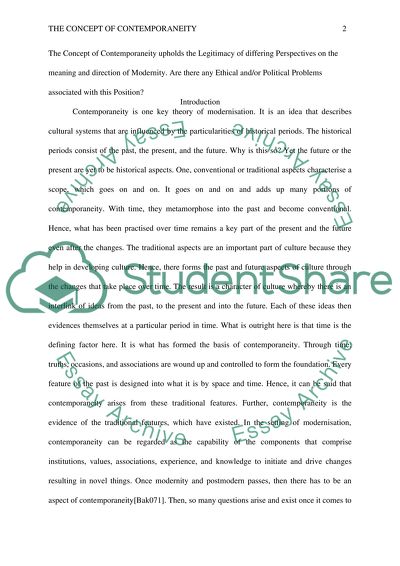Cite this document
(“The concept of contemporaneity upholds the legitimacy of differing Essay”, n.d.)
The concept of contemporaneity upholds the legitimacy of differing Essay. Retrieved from https://studentshare.org/miscellaneous/1692229-the-concept-of-contemporaneity-upholds-the-legitimacy-of-differing-perspectives-on-the-meaning-and-direction-of-modernity-are-their-any-ethical-andor-political-problems-associated-with-this-position-your-answer-should-make-specific-reference-to-wu-hung
The concept of contemporaneity upholds the legitimacy of differing Essay. Retrieved from https://studentshare.org/miscellaneous/1692229-the-concept-of-contemporaneity-upholds-the-legitimacy-of-differing-perspectives-on-the-meaning-and-direction-of-modernity-are-their-any-ethical-andor-political-problems-associated-with-this-position-your-answer-should-make-specific-reference-to-wu-hung
(The Concept of Contemporaneity Upholds the Legitimacy of Differing Essay)
The Concept of Contemporaneity Upholds the Legitimacy of Differing Essay. https://studentshare.org/miscellaneous/1692229-the-concept-of-contemporaneity-upholds-the-legitimacy-of-differing-perspectives-on-the-meaning-and-direction-of-modernity-are-their-any-ethical-andor-political-problems-associated-with-this-position-your-answer-should-make-specific-reference-to-wu-hung.
The Concept of Contemporaneity Upholds the Legitimacy of Differing Essay. https://studentshare.org/miscellaneous/1692229-the-concept-of-contemporaneity-upholds-the-legitimacy-of-differing-perspectives-on-the-meaning-and-direction-of-modernity-are-their-any-ethical-andor-political-problems-associated-with-this-position-your-answer-should-make-specific-reference-to-wu-hung.
“The Concept of Contemporaneity Upholds the Legitimacy of Differing Essay”, n.d. https://studentshare.org/miscellaneous/1692229-the-concept-of-contemporaneity-upholds-the-legitimacy-of-differing-perspectives-on-the-meaning-and-direction-of-modernity-are-their-any-ethical-andor-political-problems-associated-with-this-position-your-answer-should-make-specific-reference-to-wu-hung.


